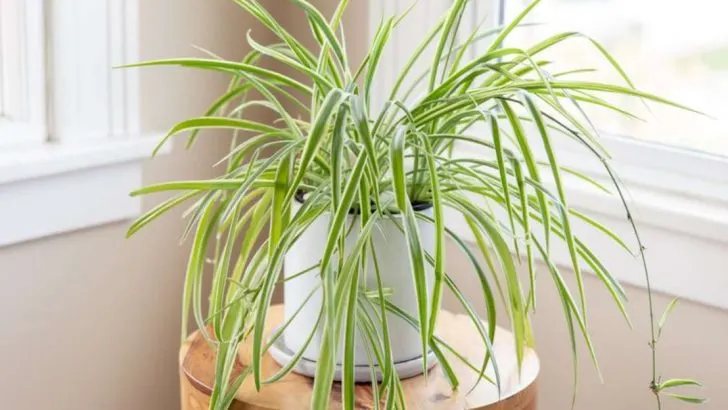Excess humidity in your home can lead to mold, mildew, and discomfort, but did you know that certain plants can help regulate moisture levels naturally? Some houseplants have the ability to absorb excess humidity through their leaves, improving air quality and creating a healthier indoor environment.
Plants like Boston ferns, peace lilies, and spider plants not only thrive in humid conditions but also actively reduce moisture, making them perfect for bathrooms, kitchens, and other damp areas. By strategically placing these moisture-absorbing plants throughout your home, you can enjoy better air circulation and a fresher living space without the need for dehumidifiers.
Discover the top 10 plants that can help balance humidity levels in your home while adding beauty and greenery to your space!
Boston Fern
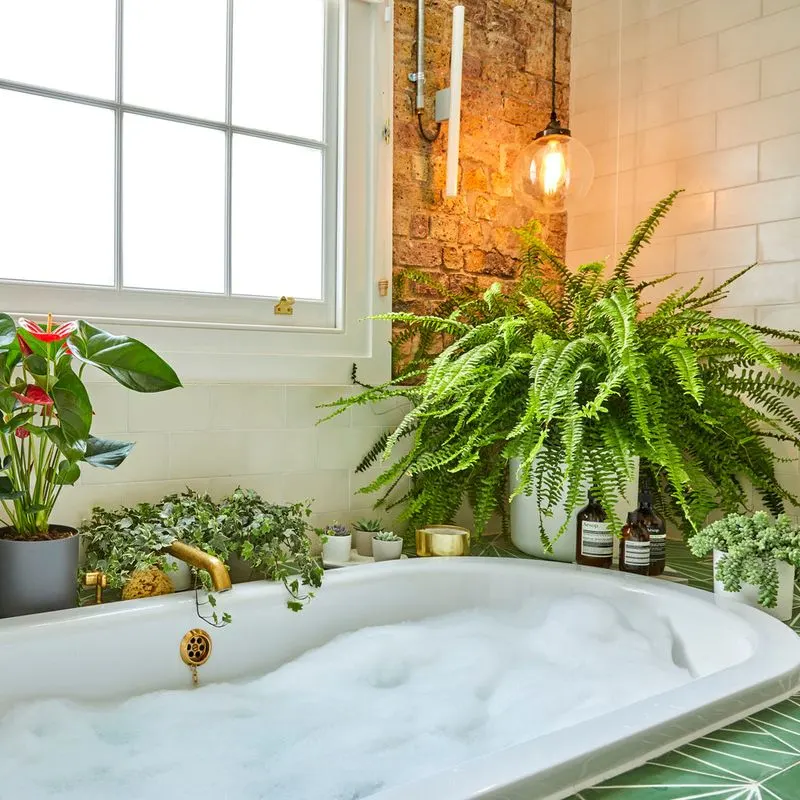
Known for its elegant fronds, the Boston Fern is not just a decorative piece but a powerhouse in humidity absorption. Its ability to thrive in high humidity makes it a favorite among plant enthusiasts. Place it in your bathroom or kitchen where moisture levels are highest.
Caring for this plant involves regular misting to mimic its natural habitat, ensuring it can continue to perform its moisture-absorbing duties effectively.
A quirky fact: the Boston Fern was a popular choice in Victorian-era parlors, prized for its delicate beauty and air-purifying capabilities.
Peace Lily

With its striking white blooms and dark green foliage, Peace Lily serves a dual purpose: beautifying spaces and reducing humidity. It’s particularly effective at absorbing moisture, making it ideal for rooms prone to dampness.
Place it in indirect sunlight, and enjoy its air-purifying benefits alongside its moisture-absorbing qualities. Peace Lilies have a unique trait: they wilt when thirsty, giving you a clear signal of their needs.
Did you know? These plants are often associated with tranquility and peace, hence their name. A perfect companion for relaxation spaces.
Spider Plant
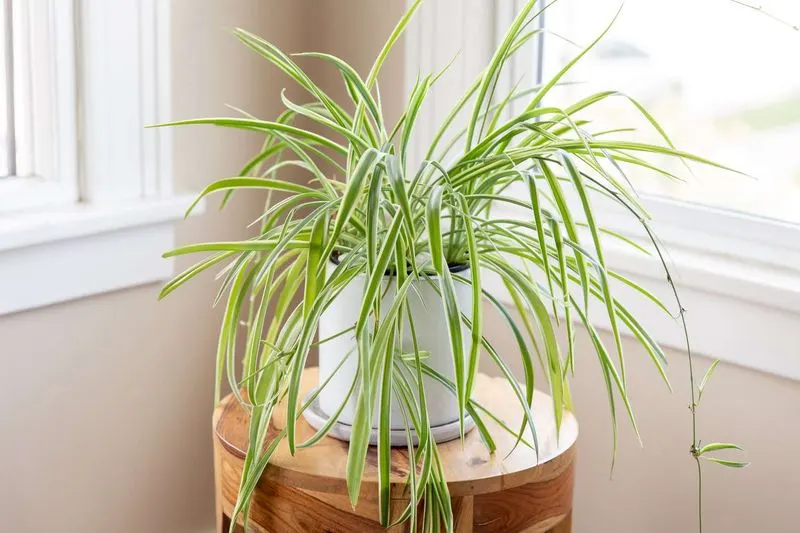
Spider Plants are like little green warriors against indoor humidity. With their cascading leaves and small white flowers, they not only beautify spaces but also absorb excess moisture efficiently.
These resilient plants are easy to care for, making them perfect for beginners. They thrive in a variety of conditions, needing only occasional watering and indirect sunlight.
Fun fact: Spider Plants are known to produce ‘babies’ or offshoots, which can be replanted to expand your collection or shared with friends.
English Ivy
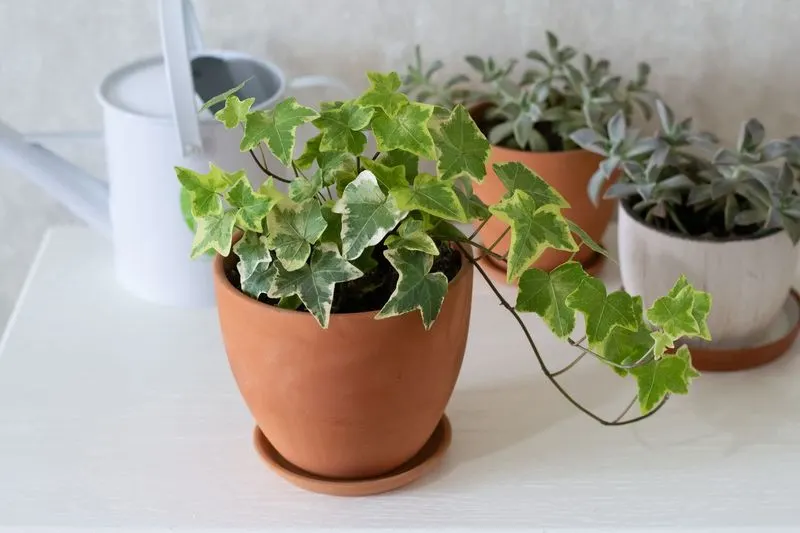
English Ivy is a classic choice for improving air quality and controlling indoor humidity. Its trailing vines add elegance to any space, while its leaves work tirelessly to absorb excess moisture.
This plant prefers cooler environments and thrives best with minimal direct sunlight. Let it cascade from a shelf or hang it in a basket for an eye-catching display.
Historically, ivy has been seen as a symbol of fidelity and affection, making it a charming addition to your home with a touch of sentimental value.
Snake Plant
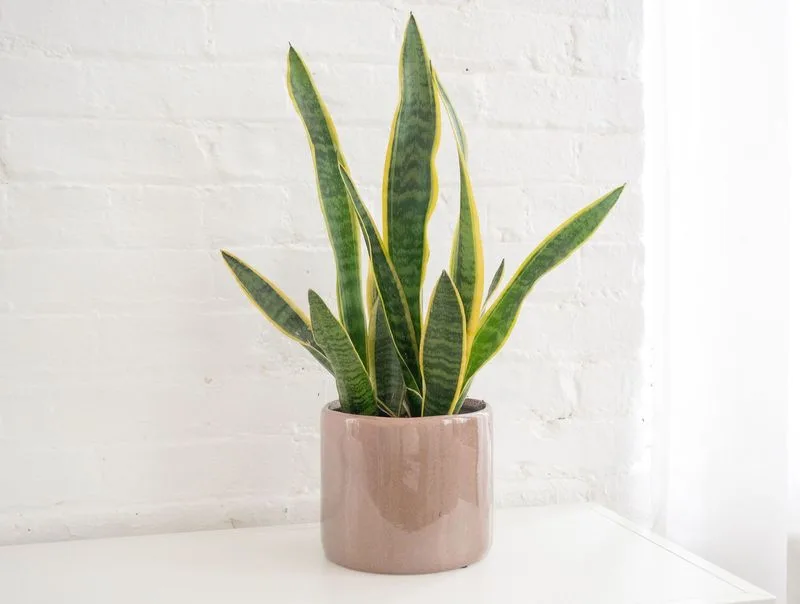
The Snake Plant, with its striking upright leaves, is not just about aesthetics. It’s highly effective at absorbing moisture and releasing oxygen, making it a great choice for bedrooms.
This hardy plant requires little attention; it’s drought-tolerant and can survive in low light, making it ideal for forgetful plant owners.
A curious fact: it’s also known as “Mother-in-Law’s Tongue,” a nod to its sharp, pointed leaves. Its unique appearance and robust nature make it a standout option for moisture control.
Aloe Vera
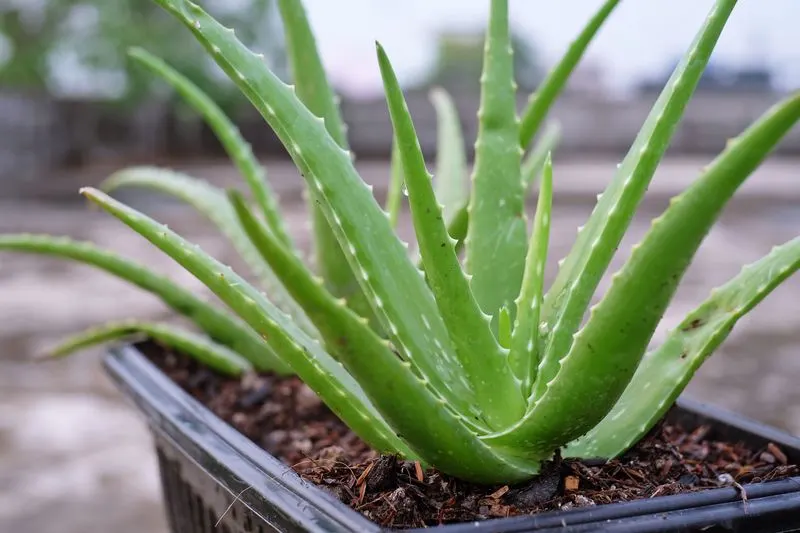
Aloe Vera is as practical as it is attractive, known for its medicinal uses and moisture-absorbing ability. Its succulent leaves store water, helping to regulate humidity levels indoors.
Position it near a south-facing window to thrive. Besides moisture absorption, Aloe Vera can soothe skin irritations, making it a handy plant to have around.
Did you know? Aloe has been used for centuries in traditional medicine for its healing properties, revered by ancient civilizations for its versatile benefits.
Bamboo Palm
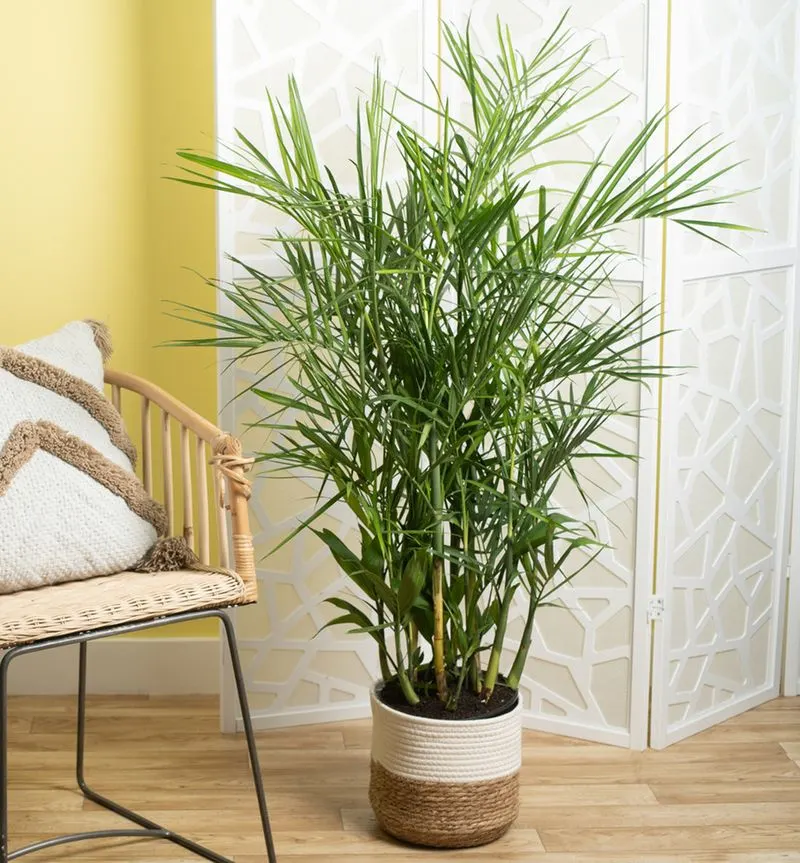
The Bamboo Palm, with its feathery, lush foliage, excels at both moisture absorption and air purification. Ideal for living rooms, it provides a tropical feel while working to keep humidity in check.
This plant thrives in indirect light and prefers slightly moist soil, making it a sophisticated yet easy-care addition to your home.
Interesting tidbit: The Bamboo Palm is a favorite for offices and homes alike, bringing a slice of the tropics into urban environments with grace and style.
Ficus Tree
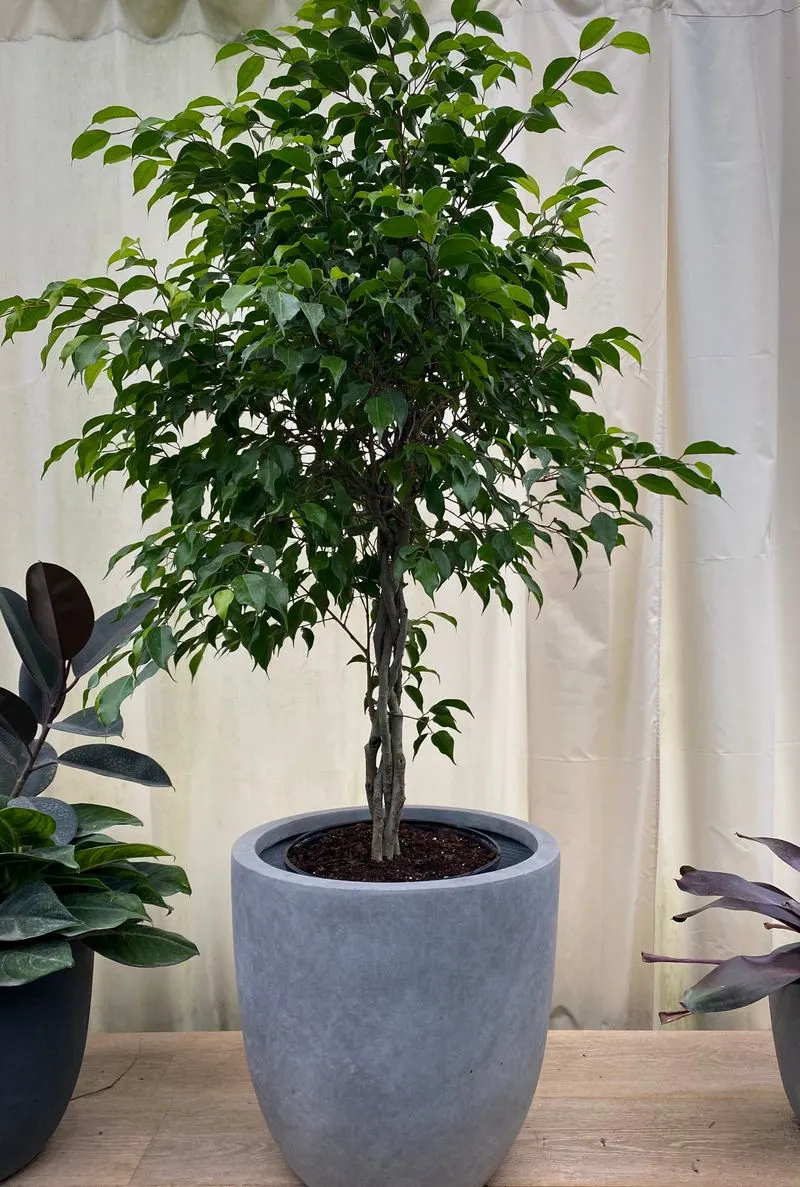
Ficus Trees are not only striking in presence but also functional in maintaining indoor air quality and humidity levels. Their broad leaves efficiently absorb moisture, making them excellent for larger spaces.
They require a bit more care, thriving in bright, indirect light and needing regular watering.
Fun fact: In many cultures, the Ficus is considered a symbol of peace and abundance, making it a thoughtful addition to your home or office decor.
Rubber Plant
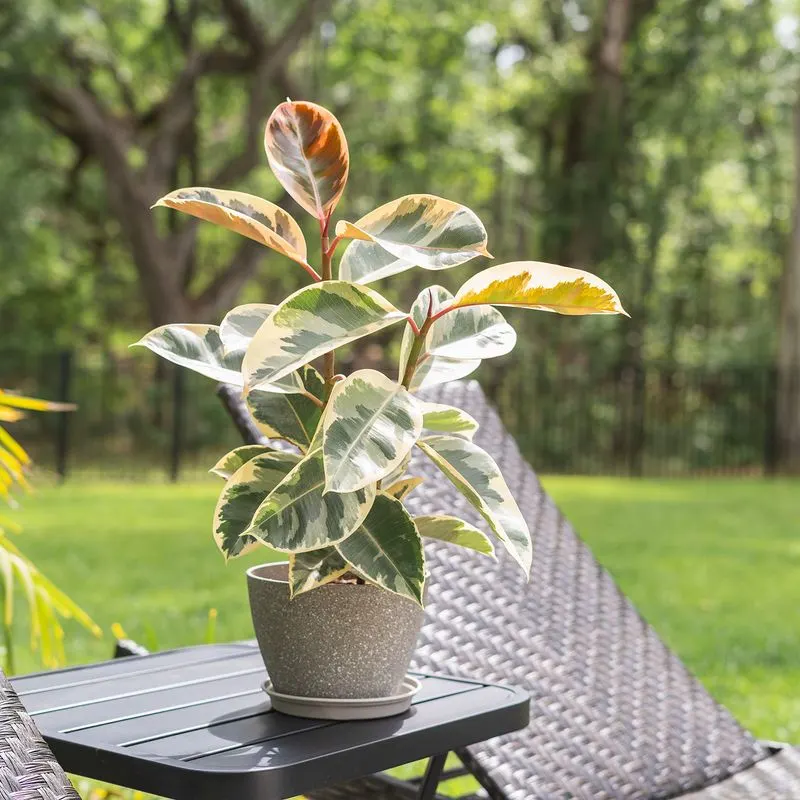
Rubber Plants are not just stylish; they’re incredibly effective at absorbing moisture and filtering indoor air. Their shiny, dark green leaves add a touch of modern elegance to any setting.
These plants are low-maintenance, preferring indirect light and less frequent watering, making them perfect for busy individuals.
Did you know? The Rubber Plant is a relative of the fig tree, which explains its broad, leathery leaves and robust growth habit.
Tillandsia (Air Plant)
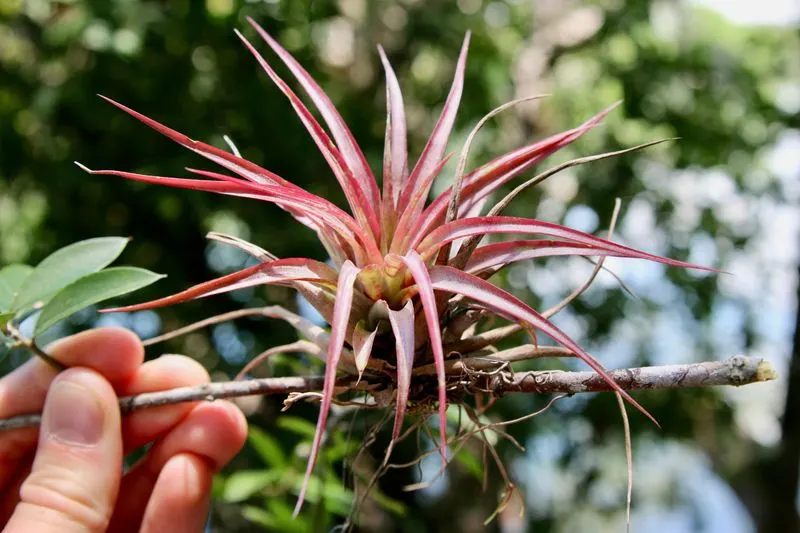
Air Plants, or Tillandsias, are unique in their ability to absorb moisture and nutrients directly from the air through their leaves. These fascinating plants do not require soil, making them versatile in design.
They thrive on regular misting and bright, indirect light, allowing for creative displays in your home.
Quirky note: Air Plants belong to the bromeliad family, sharing a lineage with pineapples, which is as intriguing as their soil-free lifestyle.

